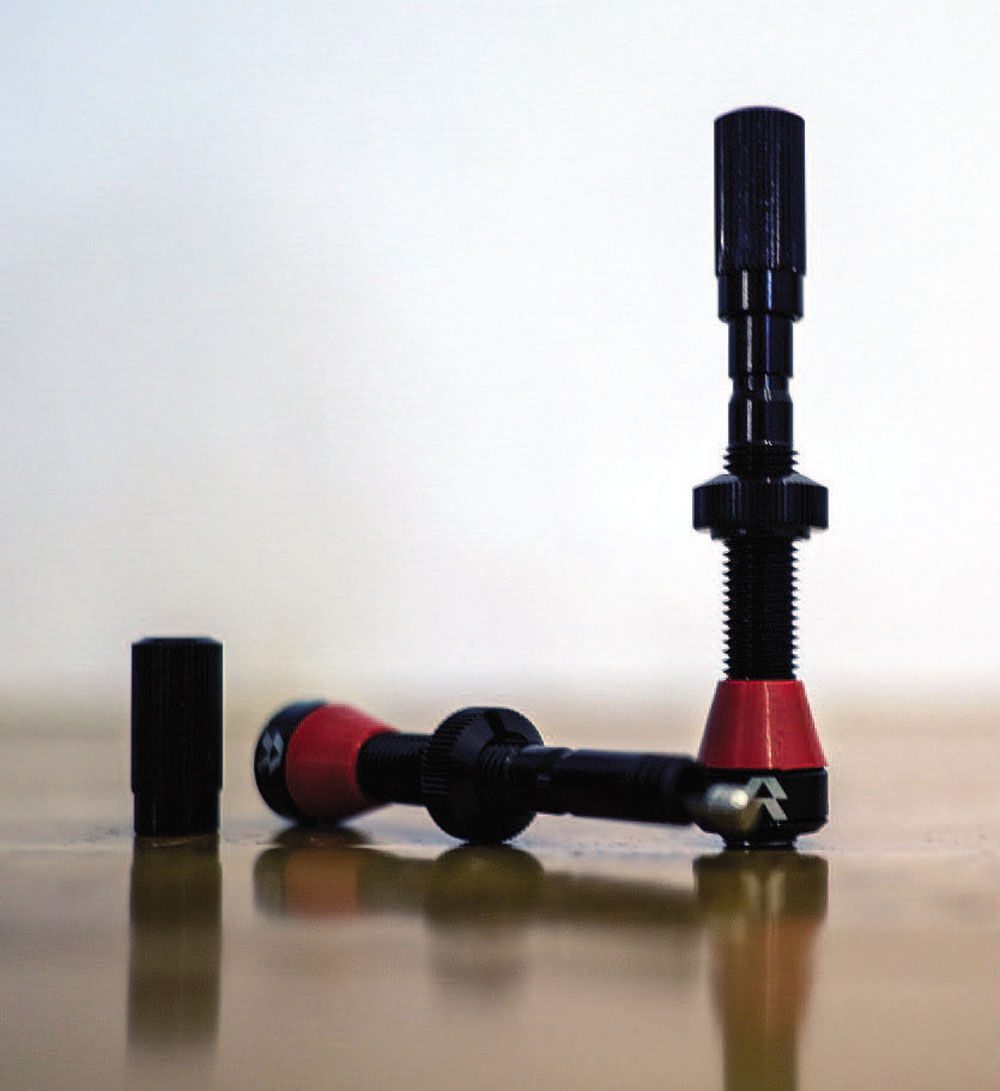“Great design, doesn’t clog, and makes seating a tubeless tyre with a floor pump a bloody breeze.”
Look, perhaps this isn’t the most exciting product on your bike… but hear me out! Valves have stood the test of time over generations of different bicycles – but they haven’t really been updated since way back in the 1920’s. Basically, there are two types of valves out there: Schrader and Presta. I won’t bore you with the details – and quite frankly I don’t have the space! – but the Presta valves are the most popular, basically stemming from the early days of road racing. It wasn’t until the mid-2010’s, when tubeless started to arrive on the scene, that a tubeless valve with removable cores came along. I hope I still have you, because I really want to tell you about the Fillmore and how it aims to change the game, creating a new type of valve from anything we’ve seen previously.
As rims and tyres get wider, the smaller diameter of Presta valves with valve cores have become the norm – but the sealant clogs, and he Presta valve makes it hard to get air through to seat the bead on a tubeless tyre. Sometimes, it’s near impossible – I’ve definitely had a few shouting episodes in the garage, trying to seat tubeless tyres. Fillmore tubeless valves aim to change that with ‘high flow and no cog’ – meaning my missus hopefully won’t have to come into the garage to find out what all the shouting is about…
The Fillmore tubeless valve works using a poppet valve. Most commonly used to control gas or vapor, a poppet valve consists of an aperture that is opened and closed by raising and lowering a disc-shaped seal onto the opening. In this case, the opening is at the valve’s base, inside the rim, so when it’s closed, no sealant can penetrate the valve stem. And, when it’s opened, the air volume is unencumbered by a core or other parts. The Fillmore accomplishes this by using a single steel plunger with an O-ring that’s pulled onto the valve base when the cap is tightened. It’s also pushed into place with air pressure. I know this seems simple, but it works well.

So, before I move on, let’s just state that these valves will cost you – a lot! But they’re a game changer and if they last forever then I’m happy to pay my hard-earned dollars. There’s a Lifetime Guarantee, too. The valves are made of intricate parts, so the cost is justified.
I laced these up to a set of Zipp Moto 3Zero Moto wheels. Normally, I’d remove the valve core and then charge up the air chamber in my tubeless pump to get the tyres to bead the rubber onto the rim. It needs a big blast of air to push past the small and clogged valve to bead up. The Fillmores were different, I pumped maybe four times quickly and the tyres caught a seat straight away. No shouting – so far – and flawlessly simple. There’s another addition to the design, which is the ability to precisely bleed air using the cap. This means that if you unscrew the cap a few turns, you can then simply tap or press it to let air out of the tyre in a controlled manner. This is a super handy feature and ensures you can get the right pressures based on the terrain you’re riding.
In the short time of testing, I’ve found no issues with these valves. I did think maybe losing the cap would cause air leakage, so took one off for a rough trail. But, no drama or air leakage occurred. After a month or so, I wanted to see if the sealant had clogged, so I deflated the tyre and looked. There was minimal residue – which is bloody impressive. I’m astounded that this hasn’t been thought of before, as this industry moves at great pace. The Fillmore valves are the answer to a question you may not have known you had but, once answered, makes your life so much easier. Plus, it helps you keep your angry shouting at bay. Great design, doesn’t clog, and makes seating a tubeless tyre with a floor pump a bloody breeze. Ok, so they’re on the pricier end of the scale, for valves, but after using them I doubt I’ll go back.
REVIEW: LIAM FRIARY
DISTRIBUTOR: HYP ERFORMANCE HARDWARE
RRP: $85

